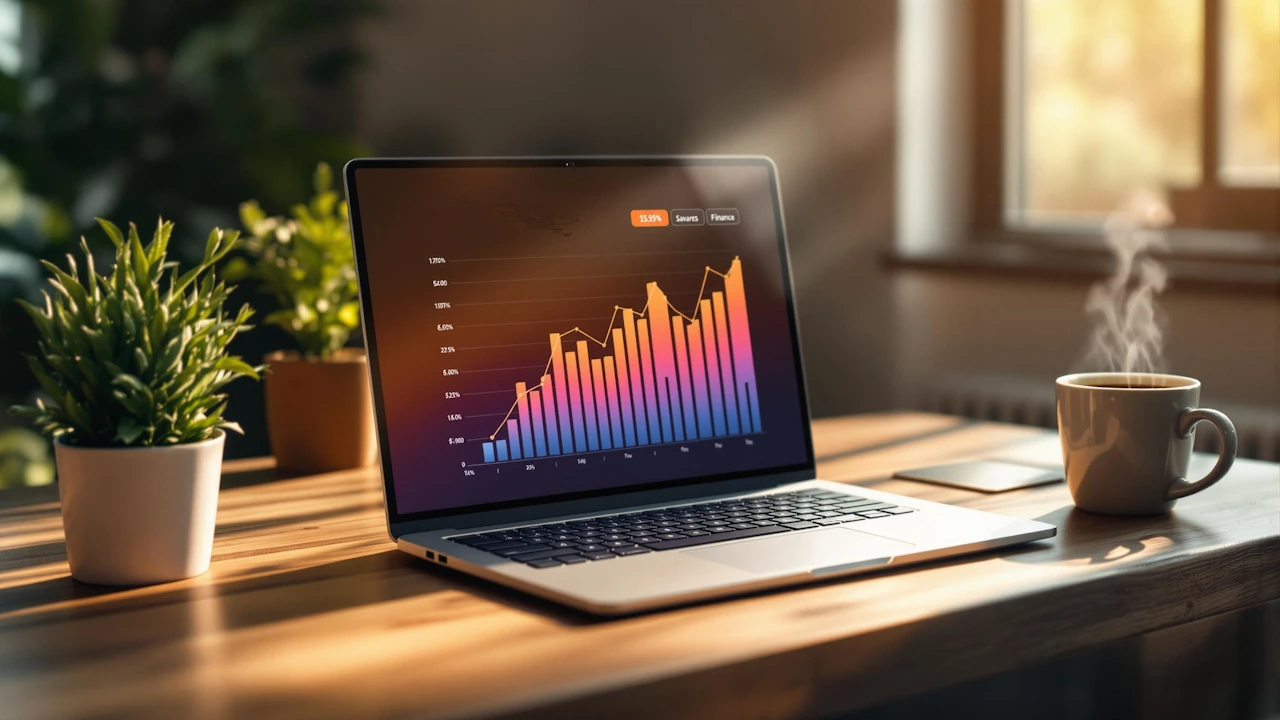Refurbished Computing
5 Reasons Refurbished Laptops Save Money
5 Reasons Refurbished Laptops Save Money
Refurbished laptops can save you 20% to 70% compared to new ones while offering reliable performance and eco-friendly benefits. They’re tested, repaired, and often come with warranties to ensure quality. Here’s why they make sense:
- Lower Costs: Save 30%–70% upfront, with brands like Dell and Apple leading the market.
- Warranty Options: Many come with 1–5 years of protection, reducing repair expenses.
- Reduced Maintenance: Professionally restored to near-new condition, minimizing issues.
- Eco-Friendly: Cut CO₂ emissions by up to 70% and reduce e-waste.
- Higher Resale Value: Retain value longer thanks to professional restoration.
Quick Comparison of Features:
| Feature | Refurbished Laptops | New Laptops |
|---|---|---|
| Cost | 30%–70% cheaper | Full retail price |
| Warranty | 1–5 years (optional) | Standard included |
| Maintenance | Thoroughly tested/repaired | No prior issues |
| Environmental Impact | 70% lower CO₂ emissions | High production impact |
| Resale Value | Stronger due to restoration | Declines rapidly |
Refurbished laptops are a smart choice for saving money, reducing waste, and maintaining quality. Read on to learn why they’re worth considering.
Why Buying a Refurbished Laptop is the Smartest Choice
1. Lower Purchase Price
Refurbished laptops offer a chance to save big, often costing 30% to 70% less than brand-new models [2]. These savings are possible because refurbishers take pre-owned devices, restore them to excellent working condition, and skip the high manufacturing costs [3].
For businesses, the financial advantages are even more compelling. Companies can cut IT procurement costs by 30% to 50% [1]. Brands like Dell, Lenovo, and Apple remain popular choices in the refurbished market due to their reliable performance and lasting value [4].
2. Warranty Protection
Getting a warranty for a refurbished laptop can save you from expensive repairs down the line. Unlike used laptops, which often come with just a 90-day warranty, many refurbishers provide longer and more detailed protection plans that can reduce repair costs over time [5]. Here’s a closer look at what these warranties offer and how they can safeguard your purchase.
Some sellers, like Dell Refurbished, provide extended limited warranties starting at £49. These plans typically cover issues like defects in materials and workmanship [7].
Here’s a quick comparison of warranty options from refurbished laptop sellers:
| Warranty Type | Duration | Typical Coverage | Cost Range |
|---|---|---|---|
| Basic | 30–90 days | Hardware defects | Included |
| Standard | 1 year | Hardware/mechanical faults | £49–100 |
| Extended | 2–3 years | Hardware issues and accidental damage | £200–300 |
Companies like Upsie help customers save up to 70% on warranty costs by eliminating middleman fees [5]. Their plans cover manufacturing defects, mechanical problems, and even accidental damage.
Some warranties go further, covering accidents like drops (up to 6 feet), liquid spills, and hardware failures. CPS (Consumer Priority Service) offers this type of all-around protection [6].
Additionally, select refurbishers now offer warranties that extend up to 5 years [1]. Sellers like Classic Shop – ITZONE Online (https://itzoneonline.co.uk) provide competitive warranty packages alongside their refurbished laptops, giving you more peace of mind for your investment.
sbb-itb-3b11325
3. Less Maintenance Cost
Opting for refurbished laptops can help you save on long-term maintenance costs. Unlike used laptops sold "as-is", refurbished devices go through a detailed process of testing and repairs to address potential issues before they arise. For example, Human-I-T reports that fewer than 1% of their refurbished laptop customers experience hardware-related problems requiring technical support [8].
Here’s a breakdown of the refurbishment process:
| Testing Phase | Components Checked | Action Taken |
|---|---|---|
| Hardware Diagnostics | CPU, RAM, optical drive, hard drive | Verified with OEM software |
| Physical Inspection | Ports, power supply, keyboard, screen | Faulty parts repaired or replaced |
| Performance Testing | System stability, temperature, battery health | Upgrades applied if necessary |
| Quality Control | All hardware and software functions | Documented with diagnostic logs |
Dell’s approach to refurbishment highlights the high standards in the industry. Stephen McPherson, Global Operations Reverse Supply Chain Senior Manager at Dell Outlet, shares:
"Many people think, ‘oh, it’s refurbished, it’s not going to be as good as new.’ But that is a mistake. For our Dell products, we can say that it is up to new quality standards. And we believe you should enjoy a refurbished product with the same warranty as if you bought it new." [9]
The cost savings are impressive – businesses can cut IT expenses by 30% to 50% by choosing refurbished laptops [1]. This thorough process ensures not just upfront savings but also reduced maintenance needs over time.
Refurbished laptops also come with key updates such as a newly installed operating system, complete data wiping with verified security, hardware upgrades, and the replacement of aging components to ensure reliability.
4. Waste Reduction Savings
Refurbished laptops not only save on purchase and warranty costs but also help cut down on environmental expenses.
E-waste is a massive issue, costing the global economy around £37 billion annually, according to the UN [13]. Refurbished laptops help address this by lowering upfront costs and reducing environmental damage. For instance, producing a new laptop generates between 300 and 1,000 kg of CO₂ emissions [12]. Refurbished laptops can slash these emissions by up to 70% [12], significantly cutting hidden supply chain costs.
Here’s a quick comparison of how refurbished laptops stack up against new ones in terms of environmental impact:
| Environmental Factor | New Laptop Production | Refurbished Laptop | Cost Impact |
|---|---|---|---|
| CO₂ Emissions | 300–1,000 kg [12] | 70% reduction [12] | Reduced carbon tax liability |
| Water Usage | Standard production | 86% reduction [11] | Lower water utility costs |
| Raw Materials | Full extraction [10] | Minimal new materials [10] | Decreased material costs |
| E-waste | Major contributor | Up to 80% reduction [11] | Lower disposal fees |
Switching to refurbished technology can cut IT costs by 30–50% while shrinking your company’s environmental footprint [1]. For example, Circular Computing’s refurbishment process produces over 15 times less CO₂ compared to manufacturing a new device [1].
Since 80% of a device’s lifetime CO₂ emissions come from production [11], extending its use is a practical way to combat the staggering 62 million tonnes of e-waste generated globally in 2022 [1]. With only 17.4% of e-waste being formally recycled [13], opting for refurbished laptops supports both economic and environmental goals.
Providers like Classic Shop – ITZONE Online (https://itzoneonline.co.uk) offer refurbished laptops that balance cost savings with eco-conscious practices.
5. Strong Trade-in Value
Refurbished laptops are not just cost-effective; they also tend to hold their resale value better than new devices.
New laptops generally lose 20–30% of their value each year [14]. On the other hand, refurbished laptops – thanks to professional restoration, quality checks, and certifications – maintain their value for a longer period [15].
Here are some key factors that influence the trade-in value of refurbished laptops:
| Factor | Impact on Trade-in Value | Benefit |
|---|---|---|
| Professional Restoration | Restored to near-new condition [15] | Builds buyer confidence |
| Quality Grading | Transparent assessment of condition [15] | Simplifies value estimation |
| Warranty Coverage | Includes one-year protection (e.g., Amazon Renewed) [15] | Increases trust for buyers |
| Brand Recognition | Premium brands retain value better [14] | Higher resale potential |
Brands like Apple, Dell, and Lenovo are particularly known for retaining their value. For instance, MacBooks in good condition can sell for 20–65% of their original price, depending on their age and specifications [16]. Data from Flipsy shows that MacBook Pro trade-in values range anywhere from £20 to £2,612, depending on the model and condition [16].
Want to maximize your trade-in value? Follow these tips:
- Keep all original components and accessories [16]
- Upgrade RAM or SSD when possible [14]
- Maintain the laptop in good condition
- Sell before the release of newer models [16]
Conclusion
Refurbished laptops offer a practical way to save money while meeting performance needs. They provide cost savings not just at the time of purchase but throughout their use. These devices are typically 20–60% cheaper than new models [17], helping businesses and individuals lower IT expenses without sacrificing reliability.
Here’s a closer look at the benefits:
| Category | Benefit | Supporting Data |
|---|---|---|
| Initial Purchase | 20–60% lower costs | Compared to buying new [17] |
| IT Costs | 30–50% reduction | Through refurbished equipment [1] |
| Carbon Footprint | Up to 15× lower CO₂ emissions | Thanks to remanufacturing [18] |
| Energy Use | 70% less energy consumed | Over the product’s lifecycle [19] |
On top of financial benefits, these laptops have a smaller environmental footprint. Extending a laptop’s life by just one year can cut its carbon footprint by 30% while saving around 127 kg of CO₂, 10,000 liters of water, and 22 kg of chemicals [19].
Retailers like Classic Shop – ITZONE Online are meeting this demand by offering quality-tested refurbished laptops with warranties. This reflects a growing trend, as 68% of consumers now prefer refurbished electronics [19].
With global e-waste expected to hit 74 million metric tons by 2030 [18], choosing refurbished laptops isn’t just a smart financial decision – it’s a step toward reducing environmental impact. They combine affordability, dependability, and eco-consciousness in one package.

